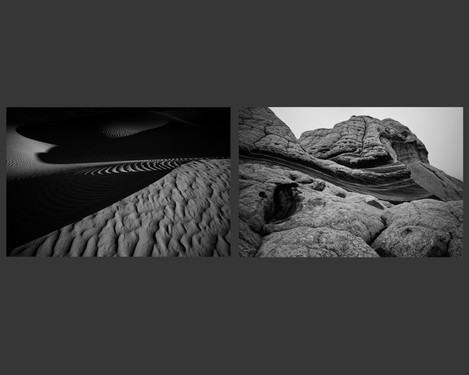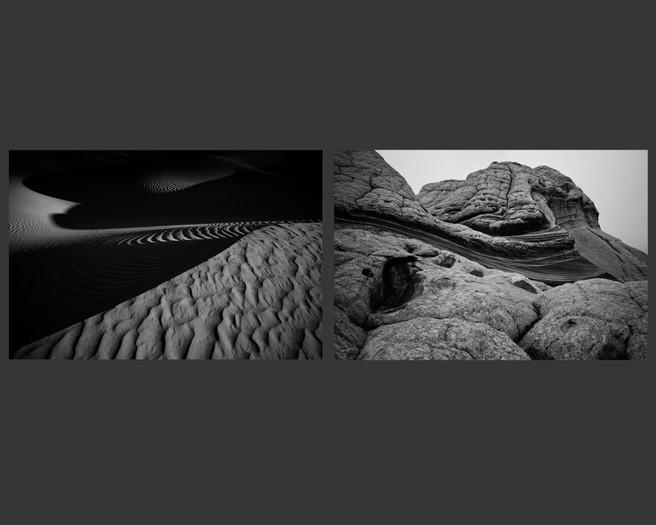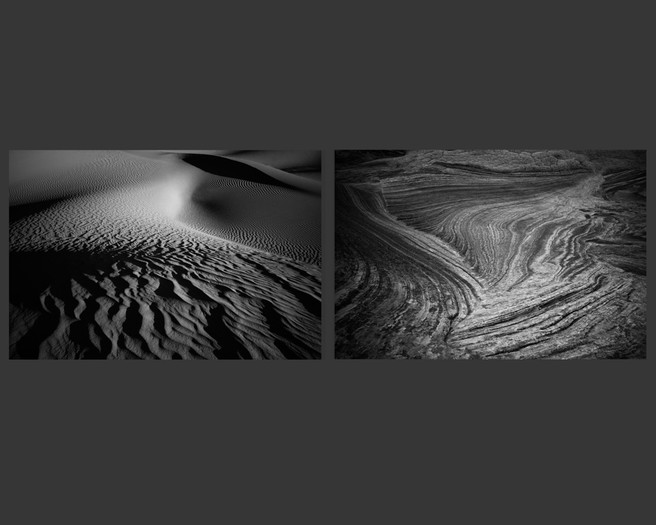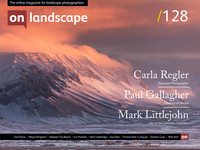Dan Nathan

Thomas Peck
The real pleasure of photography is that it forces me to slow down and really look. That’s never easy in our rushed world, so a chance to stop, look and see is truly valuable.

Sahara 08:33, Utah 23:38
Paralland Sand, Stone and Time
Semiotics is the study of how meaning is created and communicated – signs and symbols and their use or interpretation. It grew out of the study of the written and spoken word: linguistics, but rapidly broadened to encompass all forms of communication. All of us are excellent semioticians, particularly in the visual sphere. For example, think of when you are driving your car and you see red or green traffic lights. Meaning and understanding is instantaneous – we know the signs and the code, its rules and regulations – and we behave accordingly.
In the art world, including photography, there is a tendency however, for meaning to be slightly more obscure. Particularly modern & conceptual art seems to delight in ambiguity. But Dan Nathan’s most recent photographical art works are exactly the opposite of this. As well as being very beautiful and dramatic images, their meaning is very clear. And Nathan achieves this meaning through use of a simple structural device, the diptych.
What does a diptych do? By bringing together two images the artist is implying a relationship between them. The viewer has to react to that relationship, to question it. Physically the eye darts from one image to the other, seeking similarities and differences. Intellectually the viewer is placed between the images and is forced to ask why has the artist brought these images together? Semiotically we search for signs that will lead to meaning. As John Szarkowksi (Director Moma) said: “photography is a sequence of arrests in time; the insterstices are filled in by the viewer”.
Let’s consider the two images above. They come from a series called Paralland in which Nathan has made photographs in two very disparate locations, the Sahara and the borderlands between Utah and Arizona. The author has chosen the images very carefully for his diptychs. For example they are clearly linked compositionally. The triangular shape and line running from the left hand side towards the right in the Sahara image creates a sense of flow which continues through the Utah photograph via the striations in the rock. This line flares out on the right hand side to create another, reversed, triangle. In the foreground the light catches the Saharan sand dune welling up to meet the Utah rock which then flows away again – an ebb and flow that thus runs through both pictures. The sky in the Sahara picture is blackened. This contrasts with the bright sky of the Utah landscape. The eye seeks out such harmonies and disparities as it jumps from one image to the other.
The images are also both printed in monochrome. That sounds like an obvious thing to say, but it is curious… The Sahara perhaps has a tradition of representation that includes black and white photographs. But Utah? I’ve been to this area – I think the image is actually from White Pocket in the Vermillion Cliffs National Monument – and the most striking thing about this area is the colour! Vermillion Cliffs gives the game away; these rocks are a visual explosion of vibrant colours. So the choice to discard colour, in both images, is another intentional act by the artist that allows him to bring together two locations that are thousands of miles apart.
There is one other device that pulls together the two pictures: the title: Sahara 08:33, Utah 23:38. Nathan has geolocated the different positions of the two images, but used GMT to link them. Different places but parallel times.
In terms of semiotics we have so far only looked at the ‘signs’, the things in the images that are there for us to interpret. So what about that interpretation…, what is being ‘signified’? What does it all mean? Shifting sands and sandstone rock, linked by time, by composition, by monochrome treatment…. The suggestion is that these are the same in some way; how natural forces have melded and shaped both these terrains. The impact of geological metamorphosis is the same in both locations. The fact that one is sand, and the other sandstone, is merely a question of time. Ultimately everything will turn to sand…
Dan Nathan is represented by Serena Morton 2 gallery for exhibition work: http://serenamorton.com/ His work is being exhibited now until end of January alongside other photographers such as Billy Name, Bill Bernstein, Peter Angelo Simon, Burt Glinn and Hunter Barnes
He is represented by Katherine Maginnins for luxury architectural/design projects http://www.katherinemaginnis.com/.
For a short video on Dan Nathan’s Parallands, see: http://serenamorton.com/news

Sahara 08:40, Utah 23:01

Sahara 08:33, Utah 23:38

